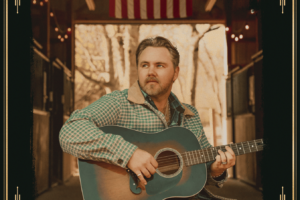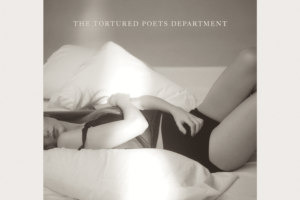“Noah” is one of those films you just can’t argue with.
Quadribrachial stone giants, endless black badlands — inhabited by what appear to be Hell’s Angels B.C. — and 300 cubits of wood, pitch and beasts-of-the-earth? I mean, come on! And who knew Noah was such a zealot?
It is no secret that Darren Aronofsky’s latest picture is not about God, a name not spoken once in the movie, and is not, for that matter, about the Bible. Actually, Aronofsky himself has declared “Noah” to be “the least biblical film ever made,” expressing pride in his translation of a religious fable into something more secular.
“Noah’s” world — a bleak, treeless thing of apparently endless desert — is inhabited by two groups: the corrupt descendants of Cain (see Genesis 4) who God plans to douse, and those of Seth, Cain’s faithful brother, the last surviving members of whom compose Noah’s small family.
With confident leads Emma Watson, Russell Crowe, Jennifer Connelly and Ray Winstone, Aronofsky pulls off a rich fantasy-realistic world. Despite these big names, however, the only exceptional performance is Anthony Hopkins’s minor role as an aloof and berry-craving Methuselah, Noah’s sage-like grandfather.
Arinofsky’s epic is not all action, though. It is filled with brief and precious artistic interludes that complete his vision, the most prominent being “Noah’s” ambitious centerpiece: an unexpected and breathtaking time-lapse fever-dream of Earth’s creation from the big bang to human being.
A large part of Noah’s artistic success, however, can be credited to masterful editing by Andrew Weisblum, who collaborated with Aronofsky on 2010’s “Black Swan,” but is also respected for editing films of Wes Anderson, namely “The Darjeeling Limited,” “Fantastic Mr. Fox,” and Moonrise Kingdom.” Weisblum manipulates the shots in such a way that the action is quick, and the viewer is occasionally surprised by the swiftness Weisblum’s cuts create: a fine example is when Noah is taken down by a Watcher (quadribrachial stone giant). Rather than see Noah’s whole body fall, as soon as he is struck Weisblum executes a quick-cut to the edgy black terrain where we see perhaps a second of Noah’s head, now horizontal, hitting the ground with an understated thud. This abridged motion turns what might be a typical plot point into something not only engaging to the eyes of the viewer, but a brief work of cinematic art. It’s moments like these that make “Noah” a cubit above the rest.
So when you go to the theatre, don’t expect a spiritual experience, expect something loud, roller-coaster-like and, at times, blazingly still. If anything, Aronofky’s adaptation of the Great Flood is epic, and considering the film’s source material, epic is exactly what it should be.







